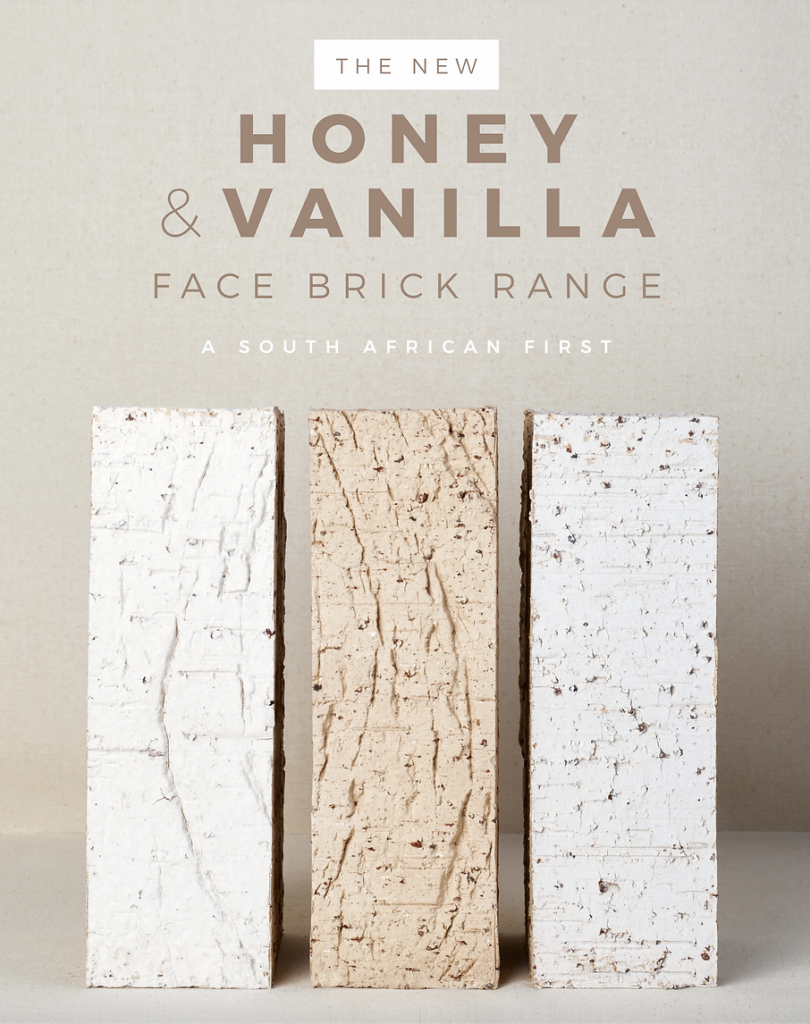The design potential of the white brick makes it ideal to be used in conjunction with a white mortar for a completely different look and feel. White brick is popular in residential developments in Europe and the US and is also often used in feature panels. Such a neutral colour is perfectly matched by our range of mono products from black to red and beige. As for the Vanilla and Honey face bricks, these are influenced by the European trend for a heritage look, supplemented by the unique artisanal finish.
*THE NEW ARTISANAL TEXTURE GIVES YOU THE APPEARANCE OF AN AGED BRICK WITH THE QUALITY OF A NEW ONE.
WHAT IS AN ENGOBED BRICK?
Engobes are colourants that comprise primarily clay minerals and oxides. By mixing them with water, we can create a liquid that we spray onto the unfired bricks as a thin layer. These engobes are then sintered firmly onto the surface, creating a ceramic bond between the engobe and the clay brick. Engobe spots can cover the surface of the brick fully or in part. And last but not least, they come in all of the colours of the rainbow.
WHY CHOOSE AN ENGOBED BRICK ABOVE A PAINTED BRICK?
The paint will eventually peel away partially or completely as a permanent bond is not created between the clay body and the paint resulting in an extra layer of unnecessary upkeep and maintenance. Painting over a brick is essentially a death sentence for brick because you’re stripping it of its natural ability to breathe and release any moisture that becomes trapped.



